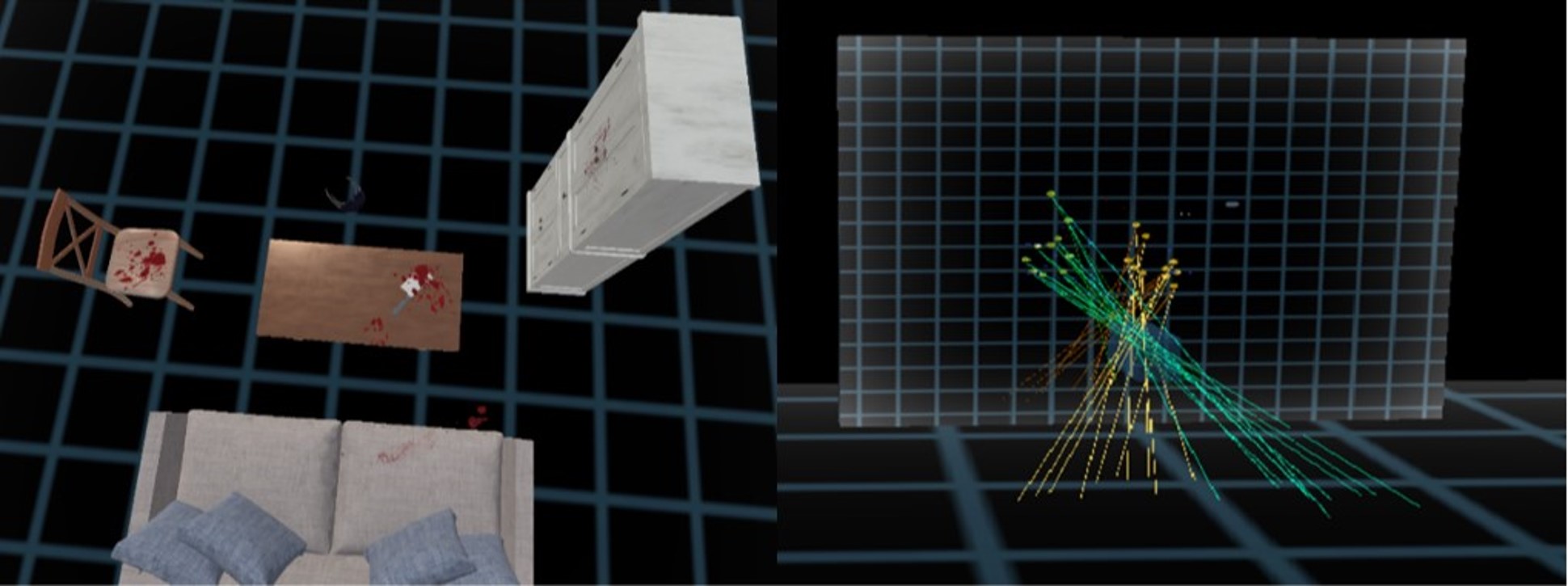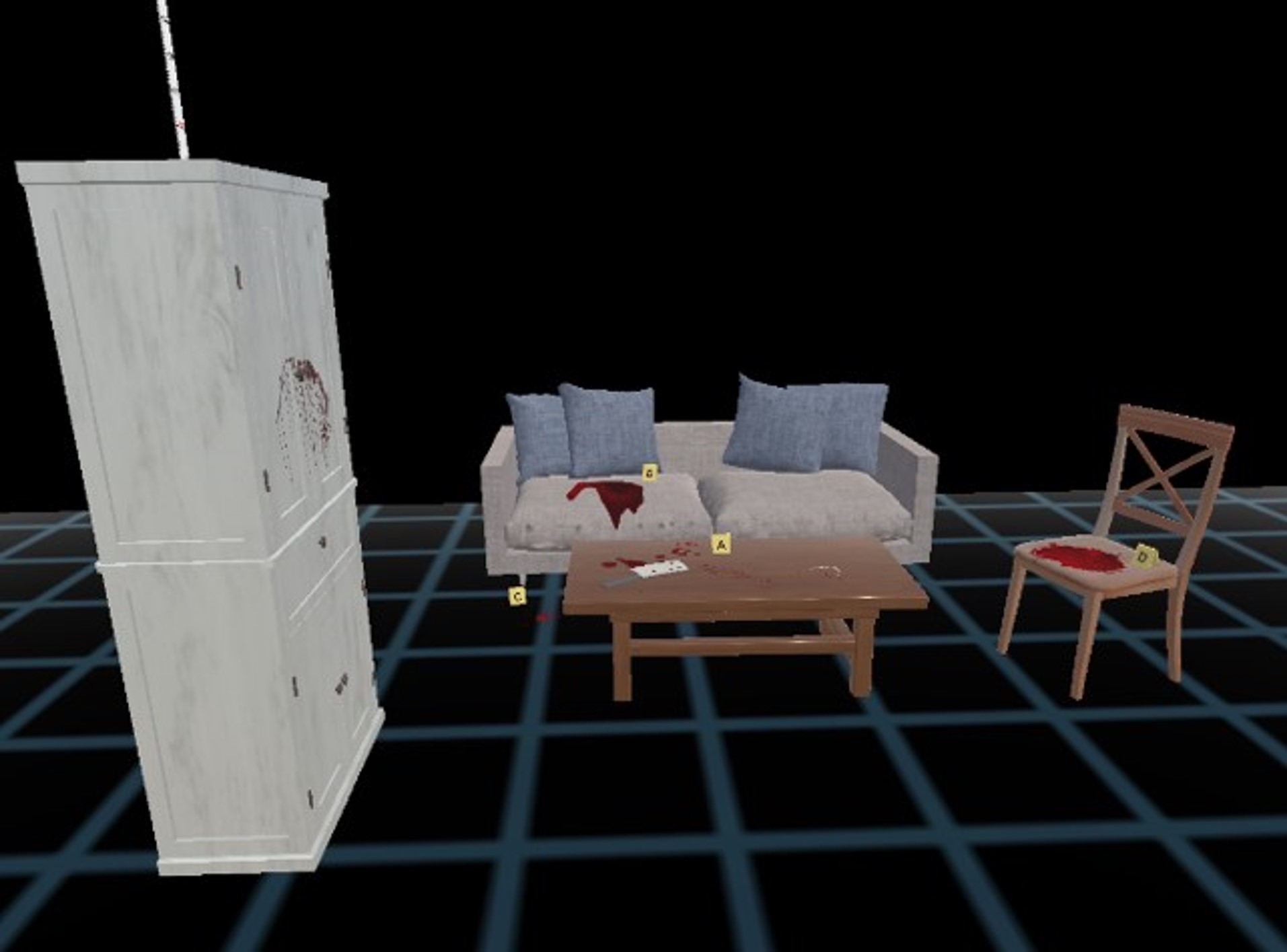In the popular mobile game, Pokémon Go, Augmented Reality (AR) technology enables players to see and capture game characters set against real-life environments. Building on similar principles, HTX’s Human Factors & Simulation Centre of Expertise (HFS CoE) together with the Criminal Investigation Department (CID) have developed a Mixed Reality (MR) technology for use in crime investigation training.
Going beyond AR and Virtual Reality (VR), this MR technology was conceptualised to help train the CID’s forensic specialists in the techniques of Bloodstain Pattern Analysis (BPA).
1d71f745-8d6c-4d94-9104-3b8dee6060da.jpg?sfvrsn=fc32f112_1)
A virtual crime scene created by the BPA system (Photo credit: HFS CoE)
Demystifying spilt blood
Blood spilt at a crime scene can offer crime scene investigators an insight into what transpired. However, such insights can only be gleaned if an investigator is proficient in deciphering the shape, size, and distribution of bloodstains.
As part of current BPA training, investigators are required to make sense of blood splatter patterns in mock scenarios. To gain proficiency, more practise involving a variety of scenarios is required.
However, in order to create each new training scenario, instructors must bear the laborious task of removing the bloodstains from the furniture, walls and floor before setting up a new scenario with a fresh set of synthetic bloodstains. On some occasions, many attempts are required before an instructor can enact the right bloodstain pattern for the training scenario.
Beyond building scenarios, another challenge is teaching investigators “stringing”, a technique used at crime scenes to gauge the point of impact. When executing this technique, investigators will first have to identify suitable bloodstains.
Next, they are required to measure these stains by hand in order to calculate the angles of impact. Strings are then used to trace the blood splatter to the point of impact. In addition to racing against time to solve a crime, trainee investigators may find it challenging to select suitable bloodstains for analysis without guidance.
Marrying virtual with reality
Designed to eradicate these challenges, the new MR training system allows trainee investigators to experience and interact with a computer-generated environment. Unlike VR where users are fully immersed in a virtual world, MR allows users to continue perceiving their physical surroundings with virtual objects added in. Like Pokémon Go, users will be able to manipulate these virtual objects.
Both HFS CoE and CID are aiming for full-scale deployment of the new system and are conducting user trials to make further improvements to this technology.

In Mixed Reality, holographic bloodstains can be projected onto various surfaces without the need for them to be recreated manually for training in BPA (Photo credit: HFS CoE)
In the new MR system, not only are the bloodstains and strings computer generated, furniture can also be computer-generated, reducing the need for physical props in the training area. Instructors can use the new system to quickly put together new room layouts and training scenarios for their trainees to practice their BPA techniques.
Meanwhile, the instantaneous feedback provided in the MR headset guides the trainee to select suitable bloodstains and removes the need for one-to-one instructor supervision. In addition, physical strings are no longer needed, as the trainee can draw holographic lines in real-time to visually track the angles of impact of the computer-generated bloodstains.

Holographic "stringing" demonstration by the BPA system (Photo credit: HFS CoE)
Trainees will likely regard MR training like playing an AR game like Pokémon Go. The crucial difference is that the MR training system equips trainees with the skill of analysing bloodstains at crime scenes, enabling them to catch criminals in real life.
We are always seeking inquisitive and innovative individuals to co-create extraordinary solutions with us.
Join us to be at the forefront of the finest tech capabilities in the field! Join Us

